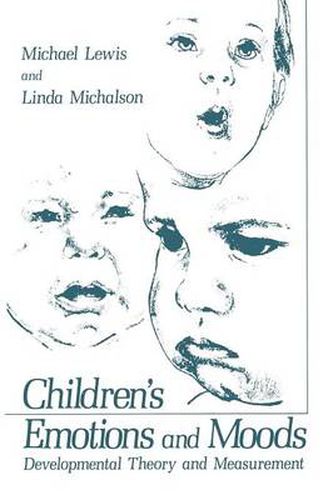Readings Newsletter
Become a Readings Member to make your shopping experience even easier.
Sign in or sign up for free!
You’re not far away from qualifying for FREE standard shipping within Australia
You’ve qualified for FREE standard shipping within Australia
The cart is loading…






This title is printed to order. This book may have been self-published. If so, we cannot guarantee the quality of the content. In the main most books will have gone through the editing process however some may not. We therefore suggest that you be aware of this before ordering this book. If in doubt check either the author or publisher’s details as we are unable to accept any returns unless they are faulty. Please contact us if you have any questions.
No one would deny the proposition that in order to understand human behavior and development, one must understand feelings.
The in tere st in emotions is enduring. Yet, within the discipline of psychology, the study of feelings and emotions has been somewhat less than re spectable, a stepchild to the fields of cognitive science and psycho linguistics. PerusaI of the language acquisition literature reveals a greater concem among psychologists for the acquisition of prepositions than for terms that convey feelings. Without question, issues related to emo tion, its development, and its measurement have been neglected in the research literature until quite recently. From a developmental perspective, Piaget and his followers have articulated a complex theory of transition and change in intellectual behavior. Nearly a century ago, Freud proposed an elaborate theory of personality development in which some aspects of emotional growth were considered. We await the construction of a comprehensive theory of emotional development. Recognizing such a need, we set out over a decade ago to solve what seemed to be a relatively simple problem: By observing young children, could one successfully classify children in terms of individual differences on emotional dimensions such as happiness, fear, and anger? The task appeared easy. One could send graduate students into a preschool and ask them to observe children for several days, after which th ey would rank the children in terms of differences on various emo tional dimensions.
$9.00 standard shipping within Australia
FREE standard shipping within Australia for orders over $100.00
Express & International shipping calculated at checkout
This title is printed to order. This book may have been self-published. If so, we cannot guarantee the quality of the content. In the main most books will have gone through the editing process however some may not. We therefore suggest that you be aware of this before ordering this book. If in doubt check either the author or publisher’s details as we are unable to accept any returns unless they are faulty. Please contact us if you have any questions.
No one would deny the proposition that in order to understand human behavior and development, one must understand feelings.
The in tere st in emotions is enduring. Yet, within the discipline of psychology, the study of feelings and emotions has been somewhat less than re spectable, a stepchild to the fields of cognitive science and psycho linguistics. PerusaI of the language acquisition literature reveals a greater concem among psychologists for the acquisition of prepositions than for terms that convey feelings. Without question, issues related to emo tion, its development, and its measurement have been neglected in the research literature until quite recently. From a developmental perspective, Piaget and his followers have articulated a complex theory of transition and change in intellectual behavior. Nearly a century ago, Freud proposed an elaborate theory of personality development in which some aspects of emotional growth were considered. We await the construction of a comprehensive theory of emotional development. Recognizing such a need, we set out over a decade ago to solve what seemed to be a relatively simple problem: By observing young children, could one successfully classify children in terms of individual differences on emotional dimensions such as happiness, fear, and anger? The task appeared easy. One could send graduate students into a preschool and ask them to observe children for several days, after which th ey would rank the children in terms of differences on various emo tional dimensions.